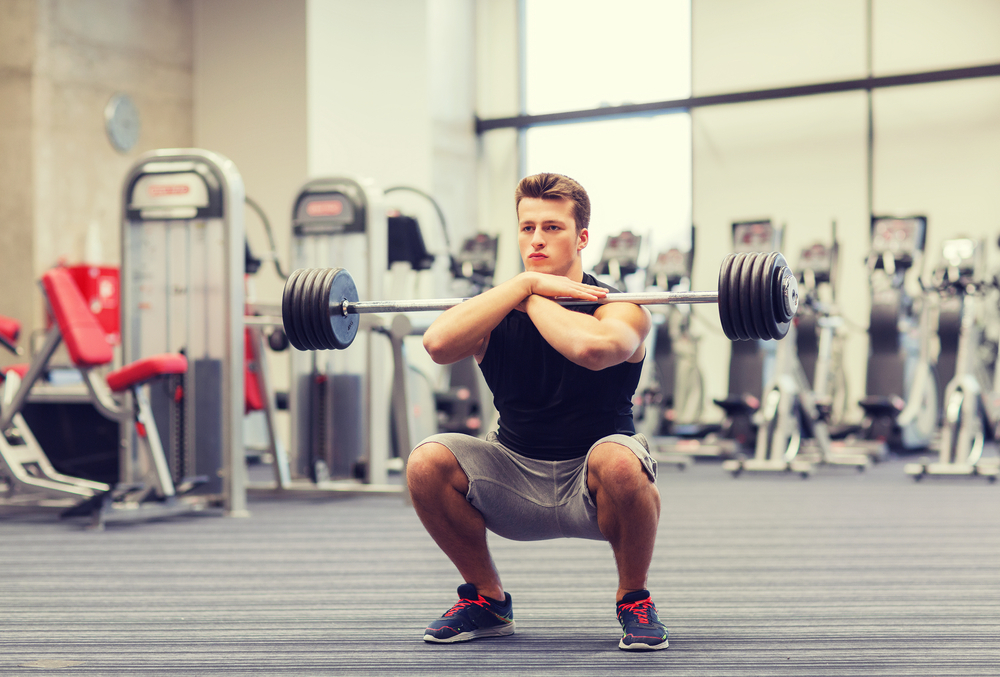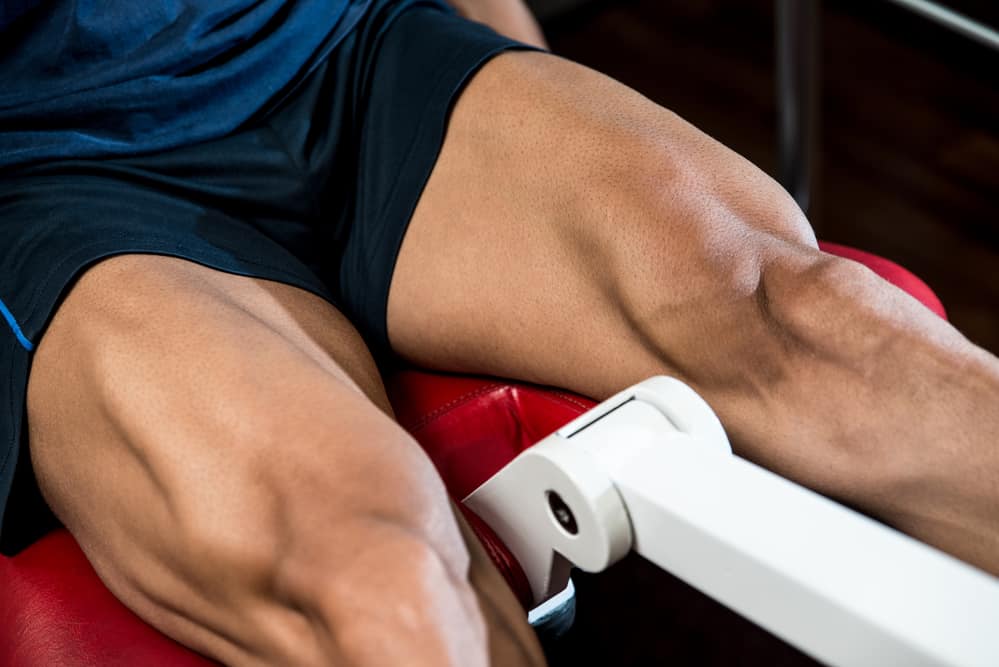Front squats are a popular variation of traditional back squats that challenge your leg muscles in a different way.
If you’re looking to introduce front squats to your leg workouts, you may be wondering whether they can build your quads more than other squat variations can.
In this article, we look at why front squats can be better for quads, as well as some common issues when performing them.
Are Front Squats Better For Quads?
Front squats target the quads more effectively than back squats.
During front squats, the load is placed on the front of your body meaning there’s more quad activation as opposed to your hamstring and glutes in back squats.

Why Front Squats Are Better For Quads
Front Squats Are Knee Dominant
When performing front squats, the bar is being held on the front of your body.
This position removes stress and effort from the muscles in the backside of your body, such as your lower back, hamstrings, and glutes, and moves it to the front of your body where your quads and knees take up the slack.
Back squats are hip dominant whereas front squats are knee dominant.
In simple terms, this means that back squats are perfect for building strength and size in your glutes and hamstrings, but front squats are ideal for building your quads.
Front Squats Engage Your Quads More
Several studies have found that fronts squats are more effective at engaging the largest and the middle muscles of your quads (vastus lateralis and rectus femoris).
While there’s some engagement of your quads during back squats, front squats increase quad engagement by enough to make a big difference.
The same studies also found that less negative stress is placed on your knees during front squats.
Although front squats are knee dominant, they’re actually working your knees in a better position reducing the negative stress placed upon them.
Better Posture And Body Position
During front squats, you‘re forced to maintain good posture and body position otherwise the bar will pull you forwards.
Technique errors are a common issue with back squats, with many squatters ending up with lower back pain or hip issues.
Front squats enforce the correct technique which ensures your quads are doing a lot of work throughout the exercise.
The more work your quads do, the bigger and stronger they will be.
Are Front Squats Quad Dominant?
As the weight being squatted is loaded on the front of your body during a front squat, your body position has to remain upright.
When the weight is loaded on your back during a back squat, it’s common to lean forwards which adds stress to other muscle groups instead of just your glutes, hamstrings, and quads.
Front squats prevent you from leaning forwards which keeps the focus of the exercise exactly where it is meant to be – your quads.
Your hamstrings and glutes still work in front squats, but to a much lesser degree than they are in back squats.
Your quads have to engage more to make up for the reduction in hamstring and glute engagement, making front squats a very quad-dominant exercise.

Why Your Quads Are Sore After Front Squats
Muscle Damage And Repair
During weight lifting sessions, microscopic tears form in your muscles.
The pain you feel in your quads after doing front squats is most likely to be from these small tears in your quads.
Microscopic tears in your muscles are actually a good thing for muscle building.
This is because as the tears get repaired by your body, they form stronger (and sometimes bigger) muscles.
The tears sustained during front squats cause microtrauma in your quads.
This trauma causes muscle inflammation, as well as other physiological effects, that add to the soreness in the working muscles after exercise.
Muscle Injury
If you’re front squatting using the correct technique and a weight suitable for your ability, you’re unlikely to get injured.
However, every now and again, you may pick up some kind of injury during your workouts or during your everyday life.
Unusual or severe pain in your quads could be a sign of an injury.
If you think you might have picked up an injury in your quads, you should consult with a medical professional who will be able to give you the best advice for recovery.
Why You May Not Feel Quad Activation During Front Squats
Incorrect Technique
If you aren’t feeling your quads activate during front squats, the first thing to do is to check your technique.
Incorrect technique is probably the most common error in front squats, and most other exercises too, if you aren’t feeling it in the muscles you should be.
If you know an experienced squatter who could watch your technique, they might be able to point out things that may be slightly off in your technique.
Recording yourself and watching it back is another good way of checking your technique is correct.
Weak Glutes And Hamstrings
If you feel more activation in your glutes and hamstrings, then it could be that these muscle groups are weaker than they should be.
Some people have built up some muscle groups and neglected others, or it could be that some of your muscles are naturally stronger.
If your quads are reasonably strong but your glutes and hamstrings aren’t, you may feel the weaker muscles activate instead of your quads during front squats.
To overcome this, you can either continue to front squat at the same weight and rep range until the weaker muscles catch up.
Or you can work on developing those muscle groups through other exercises to help eventually build up your front squats.
Conclusion
In summary, front squats work your quads much more effectively than back squats. If you want to build big quads, you should prioritize front squats over back squats.
That’s all for this article, but you may be interested in zombie squats vs front squats? Or what about lunges vs front squats?
Hope this helped!
Sources
I’ve been in the fitness and strength training industry for nearly a decade. In that time, I’ve gained 30 pounds of muscle, written hundreds of articles, and reviewed dozens of fitness supplements. As for my educational background, I’m a currently studying for my Active IQ Level 3 Diploma in Personal Training.

